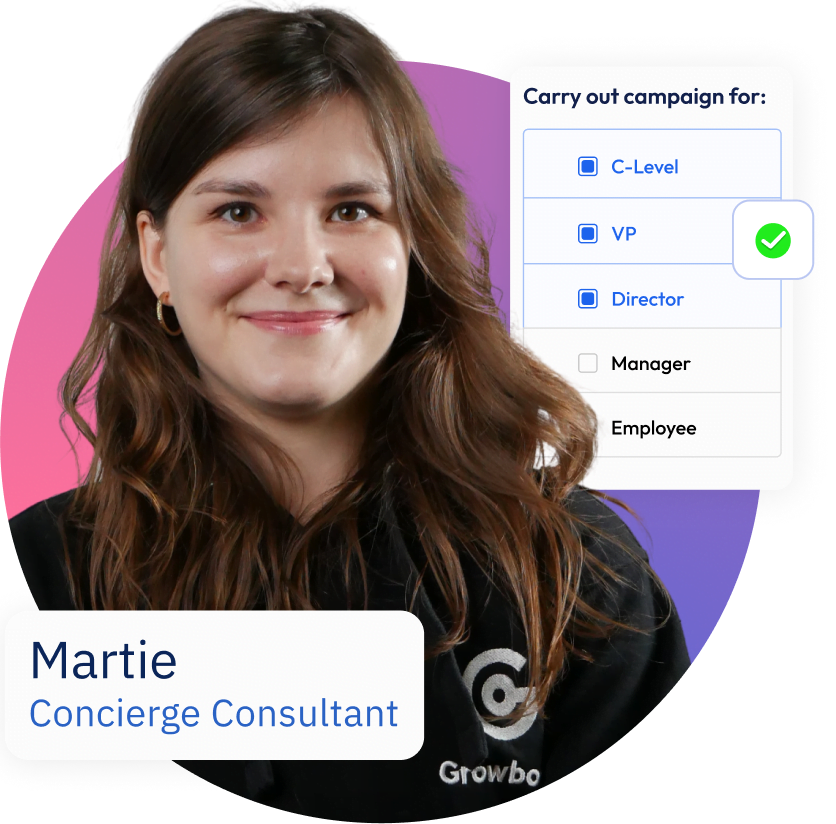What are the three questions every customer success team should ponder?
When we started doing customer success at Growbots, we were put on a steep learning curve. Over the last ten months, each day has brought new situations that we couldn’t have predicted. Which is why we love meeting other customer success people with whom we can brainstorm on different topics. It is from these meetups that we are able to lay the foundation for our future solutions. Last week we had a great opportunity to do that during SaaStock, one of the best events for SaaS startups in Europe.
From all the topics discussed we have found three that resonated with us the most. We were particularly excited about these as they were the most actionable and therefore the ones we would most likely be able to try out immediately. As a way of saying thanks to all the wonderful people we met at SaaStock, we have decided to share their answers to our questions with everybody.
Oh, and don’t worry. We’ll be sure to keep you posted on what has worked for us!
1) Which way of measuring MRR is most insightful?
Our first question was about Monthly Recurring Revenue, probably the most important metric for subscription businesses. But which variation of the metric gives the most insights for the customer success team? Which one should we monitor and which one tells us the most?
The answer to this question came to us from David Apple, Director of Customer Success at Typeform.com. David explained why net MRR churn is the most actionable metric. Firstly, customer churn doesn’t tell you the financial impact of churn as it doesn’t take into account the revenue aspect. Secondly, MRR churn can tell you whether customers that churn were a big or small part of your monthly revenue, but still it won’t tell you if expansion revenue (i.e. upgrades) or reactivations (i.e. people who return after churning) make up for churn. That’s where net MRR churn comes in handy to help show how much revenue you are able to retain from your existing user base.

Our action plan
It is important to report net MRR churn along with customer churn. Our plan is to focus particularly on net MRR churn to fully understand its impact on revenue while taking into account expansion.
2) How can I make NPS results actionable?
I have to admit, it was fun to hear others casting doubts on NPS as an industry standard. Janna Bastow, co-founder of ProdPad aired presentation on delighting customers. She claimed that a 0-10 scale is really broad and subjective; For each respondent, an answer of “7” might have a totally different meaning. Secondly, she pointed out that the question “How likely are you to recommend product X to a friend?” seems absurd. None of my friends work in my industry. Why would I recommend this product to them? We liked the idea of conducting a new survey of our customers in which we’d ask another, more emotional question, e.g. “How would you feel if you weren’t able to use product X?”
Still, despite this, NPS does its job as a health indicator and is an industry standard. That leads us to wonder how to act on the results and how to keep on improving this metric?
With this question in mind, we had a great conversation with David Apple. He shared the following tactic with us:
Correlate the results of NPS with net MRR churn
Take the two most important metrics for customer success and create a simple chart showing which customers you should focus on the most. It sounds simple, but it really shows you in a visual way where the biggest pain points of your customers are. If you’re interested in this approach, listen to David’s Apple presentation from the Totango Customer Success Summit.

Our action plan
Correlating the results of NPS with net MRR churn will give you a clear overview on which NPS groups we should focus most. We plan to take into account the non-respondents as well, as surprisingly, this might be the group that needs most of our attention.
Act on detractors and passives with personal reach out
Another tactic described by Ingmar Zahorsky, Director of Customer Success at ChartMogul focused on the idea of acting on the negative feedback shared by detractors or passives by reaching out to them personally. He recommended being really pro-active in searching for ways to make up for the negative experiences of unhappy customers. He mentioned things like offering workarounds for particular use cases or mentioning new features coming down the roadmap that would help solve the problem. These are the things that show that you really care for your customers and you’re trying your best to answer their needs.
Our action plan
This is something that we really liked, as it enables you to not only understand the current sentiments of your customers but also enables you to turn the situation around for them. And that’s what NPS should be really about.
That’s another tactic that we plan on implementing in the coming days. We’ll personally reach out to every person sharing NPS feedback with us, specifically focusing on detractors and passives by addressing their negative feedback.
3) How to design the onboarding messages?
Onboarding messages are something we’ve been experimenting with a lot recently. We picked the brains of other customer success people about them, to learn their best practices and improve our onboarding flow. We found a few approaches particularly interesting and we’ll use them to re-iterate on our current messages:
The perfect number of messages
When we were first designing the onboarding messages we followed the approach of making them action-based, but we confused things by creating way too many of them. Our customers would ignore them and even started complaining that they were getting too many messages from us. On this point Ingmar Zahorsky was eager to share his experiences. He said he uses eight messages and they’re doing their job.
Our action plan to redesign onboarding messages
We are planning to redesign our onboarding messages in the coming days. Instead of killing our users with over 20 different messages, we’ll be sticking to a smaller number of fewer than 10 messages.
Building engagement
We also talked to Janna Bastow about the onboarding messages, as we love the way she wrote them for ProdPad’s users. They focus only on the most important actions that are essential to users achieving any success. She keeps them super short and writes like she was writing to a friend.
Check out one of the messages written by Janna, they’re nailing it:

Our action plan
We are planning to focus our efforts on these crucial actions that decide whether the user will achieve his goals. We’ll keep them action-based and super short.
Having a story
Des Traynor from Intercom has written an excellent book about onboarding just recently. We didn’t get a chance to talk to him during SaaStock, but we think this tactic is something worth applying when writing onboarding messages.
The first step is running interviews with your most successful users. This so you can fully understand their frustrations with their current setup and their motivations for trying out your tool. Secondly, at the beginning of your onboarding, you need to be asking every user this question:
“What are the most important things you’re trying to achieve with product X?”
After you know the answer, you should build your onboarding around the stories that will resonate most with particular motivations. We’re fascinated with this approach and will try it out in the coming weeks. It seems like a perfect way to match motivations with messages relating to them. That way each of your messages could be really personal and engaging.
Our action plan
As we’re changing the messages we’ve been sending out for already a while, we are planning to start with evaluating their performance first. Next, we’ll re-write the messages in a way that refers to specific motivations of our users.
Over to you
SaaStock showed us that no matter what the company’s size, number of customers, or type of your product, we all face similar challenges within customer success.
We have come back with answers to our questions and an action plan of what to do next. To recap:
- Focus on net MRR churn.
- Correlate the results of NPS with net MRR churn.
- Take NPS non respondents into account.
- Personally reach out to every person sharing NPS feedback with you.
- Stick to fewer than 10 messages when onboarding.
- Keep onbarding messages action-based and super short.
- Rewrite your onboarding messages in a way that they refer to the specific motivations of your users.
It’s incredibly exciting to have a chance to talk to people who have similar challenges and questions. I wanted to thank once more all the wonderful people we met in Dublin that were so eager to talk to us about customer success.
We’d be curious to hear your thoughts on our customer success questions in the comments below: How do you act on your NPS results? And what was your most successful onboarding messages like? We’d love to continue the conversation with you.




















